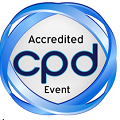
Adelaide de Pinho Almeida
University of Aveiro, Portugal
Title: Phage therapy in the inactivation of Aeromonas salmonicida in aquaculture systems: Inactivation in water and in juvenile Senegalese sole (Solea senegalensis)
Biography
Biography: Adelaide de Pinho Almeida
Abstract
One of the major sources of fi nancial loss for the fi sh farming industry is the occurrence of infections by pathogenic bacteria, especially multidrug-resistant variants. Th is problem is most prominent during the early stages of fi sh development and is diffi cult to address with traditional antibiotic treatment or vaccination. In this way, alternative environmental-friendly biological strategies to control bacterial infections need to be implemented. Under this scenario, phage therapy appears as a useful and fl exible tool for the inactivation of bacterial pathogens in aquaculture. Th e aim of this study was to test the effi cacy of phage therapy to inactivate Aeromonas salmonicida, the causative agent of furunculosis, a fi sh disease characterized by high mortality and morbidity. In order to achieve this goal, a new phage was isolated, characterized and tested in artifi cially-infected Solea senegalensis juveniles and in batch bacterial cultures. Results showed that aft er 6 hours of treatment the phage inhibited the growth of A. salmonicida both in batch cultures and seawater in the presence of fi sh juveniles (≈4 and 2.5 Log PFU mL-1, respectively). Aft er 72 hours, fi sh juveniles treated with phages aft er exposure to A. salmonicida showed no mortality, contrarily to fi shes that were only exposed to the bacterium, which presented a mortality of 36%. Th is result indicated that phage treatment was eff ective. In general, it was observed a limited re-growth of resistant cells and absence of lysogeny conversion. No signifi cant impact of phage inoculation on natural bacterial communities of aquaculture water was detected. However, the bacterial community associated with the fi sh intestinal tract was moderately aff ected by the addition of the phage. Interestingly, the diff erences were not signifi cant when the phage was added in the presence of the host bacteria. Taking this into account, this study provides evidences that the tested phage can be eff ective and safe against furunculosis during the production of juvenile fi sh.

